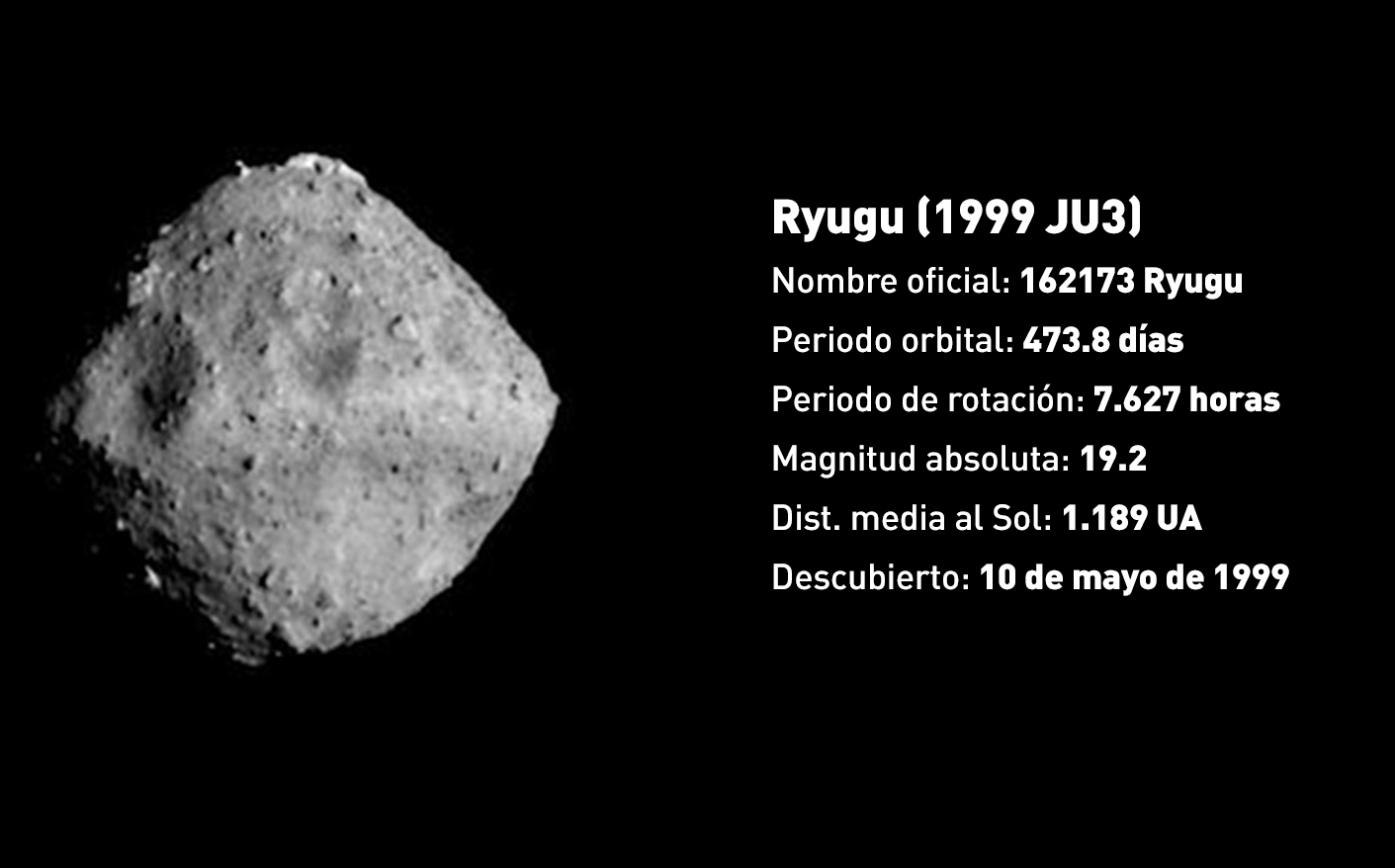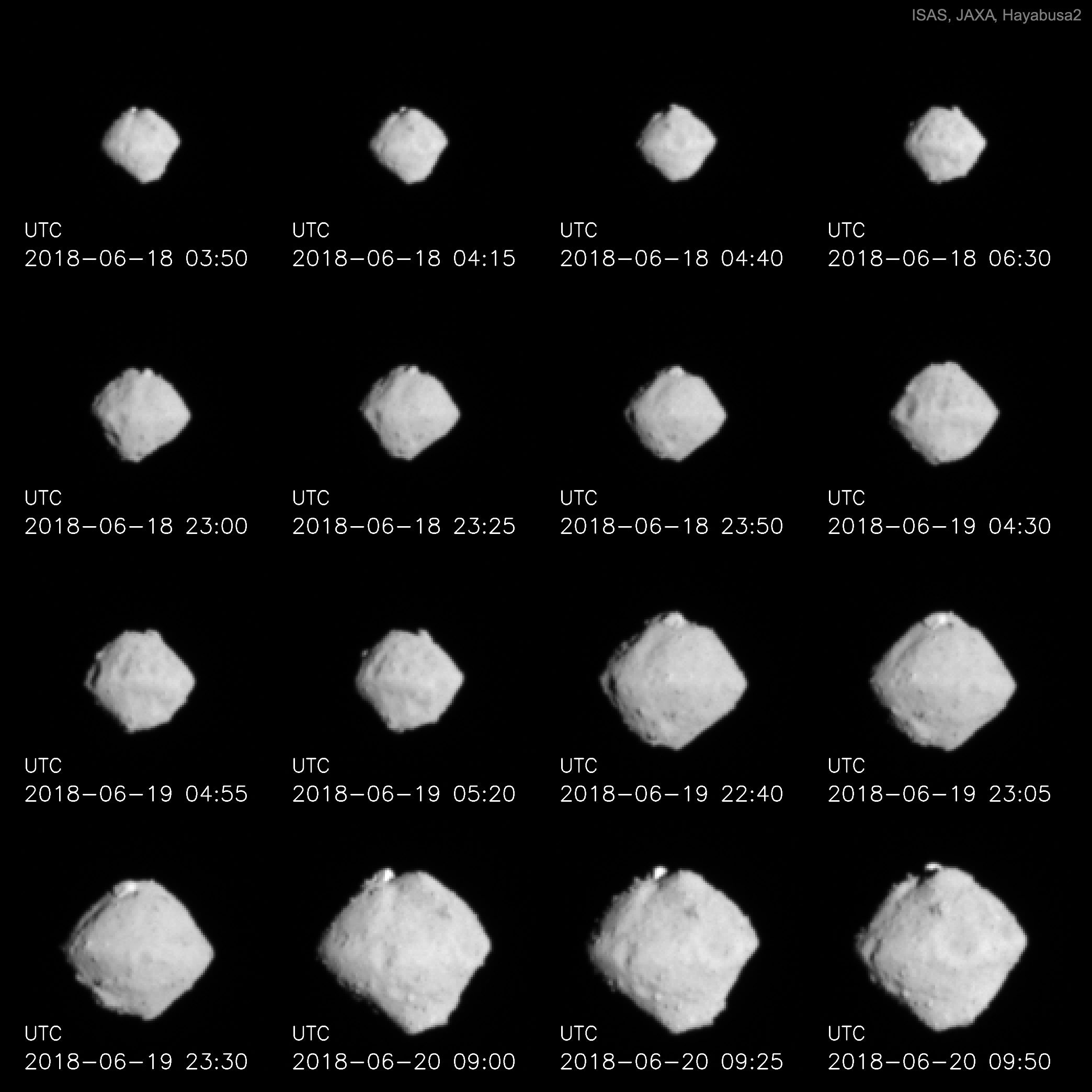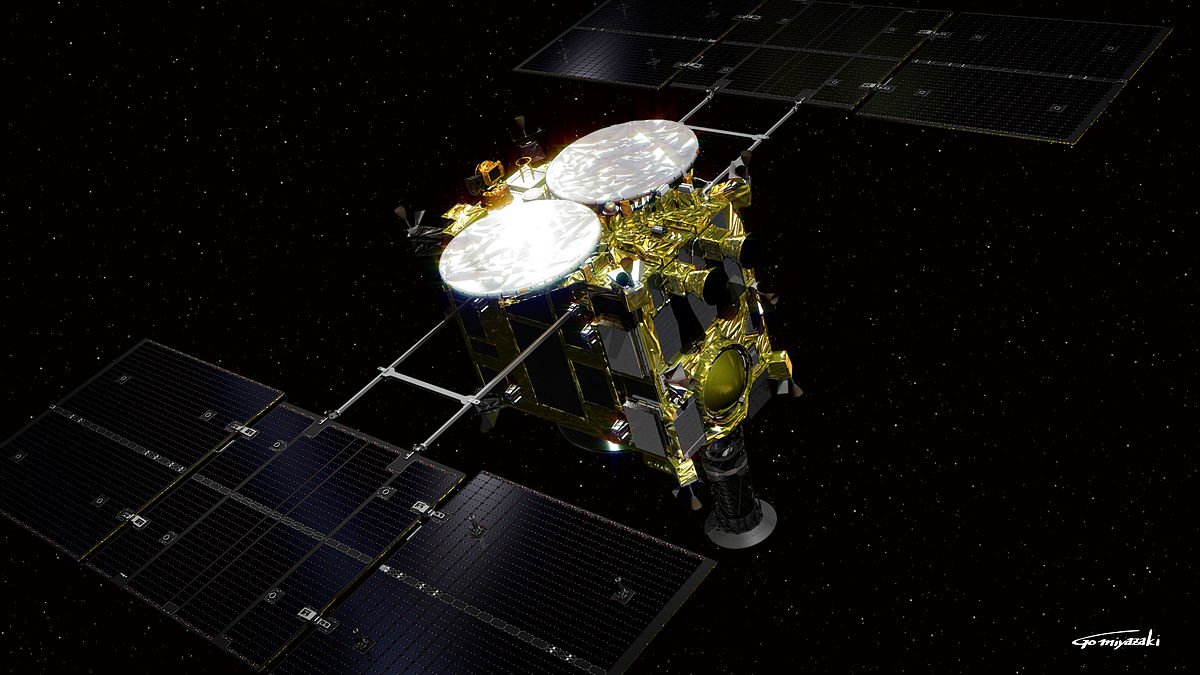© 2000-2023 - Enkey Magazine - All rights reserved
ENKEY SNC - VAT ID IT03202450924 / REA Code CA253701 - Phone. 078162719
Knowing that two small robots are now happily jumping on an asteroid almost without gravity, makes the idea of the scientific-technologic progress that characterised our decade.
We obtained the first pictures taken from the space of the asteroid Ryugu. The images are been shoted by two small japanese robots of the mission Hayabusa 2, while they were landing on the asteroid.

The two robots Minerva
The robots of which we are talking about are robots Minerva (MIcro Nano Experimental Robot Vehicle per Asteroid) of the mission of the Japanese Space Agency (Jaxa). They touched the asteroid Ryugu after be released by the probe Hayabusa 2 55 meters away.
The two robots weight 1,1 kg, they have a cylindrical shape and they are only 7 cm tall. Those have cameras, thermometers and other sophisticated instruments useful to analyse the Ryugu’s surface.
The Minerva robots come from the japanese spaceship Hayabusa 2. The japanese ship Hayabusa 2 is a 609 kg vehicles and it went out from its orbit around the station for 20 km and there it launched the two minirobots.
The asteroid Ryugu
It was discovered in the 1999 by the New Mexico’s astronomers, Ryugu is an asteroid close to the Earth that orbits around the Sun every 16 months. The asteroid is more or less between the orbits of the Earth and Mars. Ryugu measures around 920 meters and the relative proximity with the Earth makes it a good candidate for a sampling’s mission.
The scientists of the japanese space missions said that the robots are been launched successfully, but that they aren’t completely safe. The communication with the two robots stopped right when they touched the asteroid.
This is probably up to the thing that the Ryugu’s rotation pushed away the robots from the space vehicle Hayabusa 2, compromising the communication. The scientists won’t know the reason of the loss of communication until when they will try to download and analyse the robot’s images.

Hayabusa 2: the spaceship’s missions
Hayabusa 2 left the Earth in November of the 2014, onboard of a japanese rocket H-IIA, and it was arrived next to Ryugu in June of this year. The new mission will be ongoing for the rest of the year and for almost the whole 2019. Besided to the landing’s attempt by the robots, already ended, there are other steps, other missions to complete.
The spaceship will try even to sampling the asteroid and bring back some material on the Earth. To obtain a sample of the Ryugu’s ground, the spaceship have to shot a bullet of 10 millimeters with a mass of 5 grams on the asteroid’s surface.
This operation should create a small hole and, about two weeks after that, it will allow the spaceship Hayabusa 2 to return to collect a whole sample, raw and pristine of the asteroid. If everything will go well, the spacehip will leave the asteroid in the December of the 2019 and it will come back on the Earth about a year later.
The landing on the Earth is predicted in a remote area of the Australia. One of the purpose of the attempt of the launch of the two robots is the one to collect images and informations about the Ryugu’s surface by preparing the second attempt of sampling.
If they survived to the landing, the two robots will “jump” on the surface and they will charge themselves of energy through the solar cells.

Hayabusa 2: its origin
There was already a different mission Hayabusa, launched in the 2003, which brought back to the Earth in the 2010 samples of the asteroid. Infact, the space vehicle is called Hayabusa 2 due to the japanese mission that already explored the asteroid Itokawa around a decade ago.
The mission gave to the research’s laboratories a small quantity of material from the asteroid’s surface. Hayabusa 2 is been created after understood some points from the original mission, infact it tries to study Ryugu in a deeper way, with the purpose to bring a higher quantity of material and give precious informations about the origin of the Solar System.
This post is also available in:
 Italiano
Italiano

